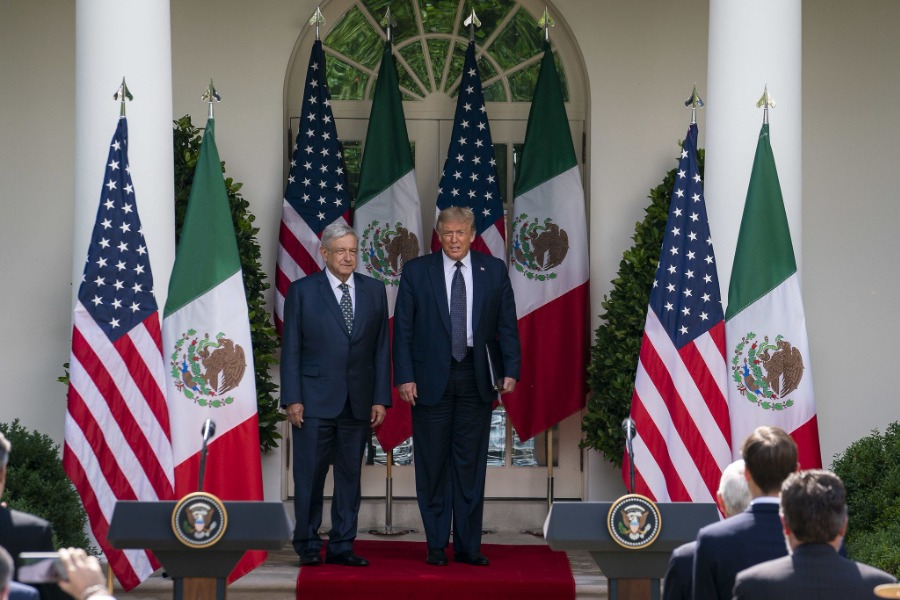The Strategic Disclosure of Intelligence Requires Stronger Guardrails
-(1).jpg?sfvrsn=e107e99c_5)
Published by The Lawfare Institute
in Cooperation With

Countries in the Five Eyes intelligence partnership (Australia, Canada, New Zealand, the United Kingdom, and the United States) are increasing their use of intelligence to influence their friends and foes. Although this practice is hardly novel, it has accelerated since early 2022, when the United States and the United Kingdom lowered the classification of (“downgraded”) secret intelligence relating to Russia’s impending invasion of Ukraine. Acting with unprecedented speed and scope, they disseminated downgraded reports to allies and partners and released declassified information to the public. These actions did not prevent Vladimir Putin’s invasion, but they wrong-footed him—partly by “pre-bunking” Russian efforts to manufacture a pretext. Alerting allies and partners to Putin’s intentions also accelerated the formation of a countervailing coalition.
These wins have prompted a rapidly expanding program of “strategic disclosure.” The Office of the Director of National Intelligence (ODNI) now receives daily downgrade requests, whereas it previously received only one or two per month. The ODNI is also proactively declassifying more intelligence reports as part of its “ongoing transparency efforts to enhance public understanding of the Intelligence Community’s (IC) work and to provide insights on national security issues.” White House spokesman John Kirby has declared strategic disclosure to be “a game changer” and said, “I hope they never put it back in the bottle.”
But two former CIA officers, David Gioe and Michael Morell (the latter is a former acting director of the agency), have struck an important note of caution. In a recent Foreign Affairs essay, they identify the risks and rewards of instrumentalizing U.S. intelligence. The biggest risk, according to the authors, is politicization: “[U]sing intelligence as a policy tool increases the chances that it will also be used as a political weapon. Were that to happen, the intelligence community could lose its most precious asset: its reputation for objectivity.”
Still, the authors accept that the “genie is out of the bottle.” U.S. policymakers, allies, partners, the media, and the public will expect more intelligence disclosures. The intelligence community is under more pressure to demonstrate its value and inform the public in an information environment characterized by a “deluge of publicly available open-source intelligence,” mistrust, and “deep state” conspiracy theories.
Warning that “intelligence is being released faster than norms can be created,” Gioe and Morrell recommend that disclosures take place only after the director of national intelligence has certified that (a) the disclosure poses a minimal risk to sources and methods, ideally by releasing analytical judgments but not the underlying raw intelligence, (b) the intelligence community has high confidence in the judgment or has specified where it does not, (c) the information is assessed to be true and does not embed disinformation, and (d) the release is reasonably likely to have the intended effect.
These recommendations are sound but insufficient. That may be because Gioe and Morell underestimate the drivers of strategic disclosure and the consequent risk to the intelligence community’s reputation for objectivity.
The Genie Was Always Leaving
Viewed in the wider context of the new information era and accelerating geopolitical competition, the Five Eyes’s decision to change the way the countries use intelligence is unsurprising.
The digital information revolution is generating a new information environment. The unprecedented flood of information is both clarifying and confusing. New digital tools—including rapid advancements in artificial intelligence—help us make sense of the world but are also used by malicious actors to generate more sophisticated and consequential disinformation.
Alicia Wanless, an expert on the information environment, has shown how the introduction of new information technology has, throughout human history, been followed by “information floods,” “information pollution,” and “information competition, where two or more communities compete for the supremacy of their idea over the wider ecosystem.”
This information competition is exacerbated by geopolitical competition. States are struggling to shape perceptions, narratives, and opinions. Because authoritarian states care less than democracies do about the integrity of the information order, they have long been more willing to use disinformation. To protect themselves, liberal democracies must engage more significantly in this growing information competition using all available tools, including intelligence.
Liberal democracies must also act quickly. Information competition is driven not only by the volume of data but also by the speed at which they move. Because information is disseminated instantaneously and globally, time is of the essence. Strategic disclosures of Putin’s plans succeeded because, according to one U.S. official, “We were beating Putin’s lie to the punch, and we know that by doing so we got inside his decision-making loop.”
Governments are under pressure to use the advantages conferred by secret intelligence before they lose them. Secrets have a shorter shelf life than they did during the Cold War—in large part because they are more likely to be independently revealed by open-source intelligence (OSINT).
Rapid advances in OSINT include, among other developments, increasingly sophisticated non-state geospatial and even signals intelligence. OSINT is enabled by the accumulation of “digital dust,” which, according to a recent report to the ODNI, “includes information on nearly everyone that is of a type and level of sensitivity that historically could have been obtained, if at all, only through targeted [government intelligence] collection.” The nongovernmental organization Bellingcat has famously used OSINT tools to make a series of discoveries, some of which may have been beyond the reach of most intelligence services.
Secret intelligence is also more susceptible to being hacked and leaked on an industrial scale—as Edward Snowden, Julian Assange, and Jack Teixeira have demonstrated. Information technology has created additional layers of security but also new vulnerabilities. Digitization has magnified the consequences of security failures, in terms of both the volume of data extracted and and the extent of its dissemination.
Governments have long made disclosure decisions on the basis of a cost-benefit calculus. Do the benefits justify the risks to sources and methods? In the information era, the imperative to make use of the information provided by intelligence is growing while the cost of revealing methods—if not sources—is decreasing. Intelligence is one of the tools liberal democracies must use as they strive to counter disinformation and compete to shape public narratives. And the risks of doing so are decreasing because governments have far fewer truly secret capabilities than they did during the Cold War. Technology is closing the gap between secret and openly sourced intelligence.
For example, the Kennedy administration’s revelation, during the Cuban missile crisis, of the extent of U.S. aerial surveillance was more costly than President Trump’s tweet of a classified satellite image showing the site of a botched Iranian rocket launch (not least because Kennedy’s revelation prompted Russia to raise alert levels and shoot down an American U-2 spy plane over Cuba). And U.S. adversaries learned nothing new about U.S. capabilities from the declassified military staging maps of Russian equipment shared with the Washington Post prior to the full-scale invasion of Ukraine.
Growing Politicization Risk
There are, however, other costs to disclosing secret intelligence. Gioe and Morell are attentive to the risk of politicization but understate it. They differentiate between active misrepresentation of intelligence—such as assertions of a link between Saddam Hussein and al-Qaeda—and politicization in its “most benign form … releasing accurate but incomplete information.” The former is “egregious” and inexcusable, while the latter is “acceptable when trying to influence a foreign adversary, but not when the audience is the American people.”
But in practice it’s not really possible to isolate the intended audience. The American people will be an audience of selectively declassified intelligence whether or not that is the intention. And history has shown that such selective releases can gravely compromise the intelligence community’s reputation.
Former Secretary of State Colin Powell’s presentation to the UN Security Council on Iraq’s supposed weapons of mass destruction (WMD) program in 2003 is the most well known example of a misleading disclosure of intelligence that helped produce a bad outcome. But U.S. permanent representative Jeanne Kirkpatrick’s 1983 presentation to the Security Council on the USSR’s downing of Korean Airlines commercial passenger flight KAL 007 is a more instructive example.
KAL 007 had accidentally strayed deep into Soviet airspace en route from Alaska to Seoul. After firing warning shots, Soviet pilots shot it down, killing all 269 passengers and crew. President Reagan’s characterization, six months earlier, of the USSR as an “evil empire” seemed more compelling in light of the downing of the flight. Kirkpatrick rammed home the point by presenting declassified intercepts of Soviet pilots and asserting that “at no point did the pilots raise the question of the identity of the target aircraft.”
But as Calder Walton points out in “Spies: The Epic Intelligence War Between East and West:”
[T]he Reagan administration … undermined its powerful case against the Soviet Union by overstating it. Much of what [Secretary of State] Shultz initially claimed turned out to be wrong. As the Reagan White House was releasing intelligence in real time, NSA analysts were still trying to produce accurate translations. In fact, the NSA translations showed that the Soviets believed they were tracking a U.S. reconnaissance aircraft.
The initial batch of declassified intelligence about flight KAL 700 was highly effective in advancing the Reagan administration’s foreign policy of the moment. According to one Soviet journalist, it was “the biggest propaganda blow ever suffered by the Kremlin during the Cold War.” But the intelligence was misleading and so damaged the intelligence community’s credibility.
This warning from history about the perils of rapidly instrumentalizing intelligence is pertinent to today’s information competition. Liberal democracies must use available information quickly, whether to shape public narratives or to get inside their adversaries’ decision-making loops. But they must also retain the trust of their publics and defend the integrity of the information order. The intelligence community has a role to play in both information competition and, in the words of the ODNI, providing the public with “insights on national security issues.”
Fulfilling both roles most effectively requires buttressing the intelligence community’s reputation for apolitical objectivity, which is, as Morell and Gioe argue, its “most precious asset.”
Stronger Foundations
Because the demand for usable information will keep growing, corresponding steps are required to entrench the foundational principles on which the intelligence community is built.
The core purpose of the intelligence community is to inform, rather than to influence, its audience. Recipients of intelligence, within or outside government, are less likely to trust information that they suspect has been tailored to sway their opinion. So professional intelligence organizations strive to be, and to be seen to be, objective. Intelligence officers aim to illuminate choices before decision-makers without recommending a course of action. If the intelligence community’s role as informer rather than influencer were sufficiently understood, Gioe and Morell would not need to specify, as they do, that strategic disclosures should not contain disinformation.
To maintain the distinction between intelligence and policy, Five Eyes countries follow a variety of rules and conventions. Indeed, the success of the Five Eyes rests on mutual confidence that intelligence sharing is not guided by policy preferences. In the U.S., intelligence officers contribute to interagency meetings but recuse themselves from policy debates. The director of national intelligence is statutory advisor to, rather than a standing member of, the National Security Council.
Intelligence community decisions about strategic disclosure should therefore not—contra Gioe and Morell—be guided by assessments of effectiveness. The rules for strategic disclosure should be informed by and reinforce this foundational distinction between policy and intelligence. The intelligence community’s objectivity should be protected by strengthening its independence, especially that of its leadership.
Some of this can be achieved through legislation. The director of national intelligence should be given a fixed term akin to that already provided to the director of the FBI (set at 10 years, notwithstanding President Trump’s early dismissal of James Comey in 2017). Australia’s director general of national intelligence is, for example, appointed by the governor general for a fixed term (normally five years) that can be shortened only in cases of misconduct.
U.S. presidential administrations should frame their requests for strategic disclosure in a way that seeks to minimize the risks to intelligence community objectivity. Rather than seeking the release of particular intelligence items, administrations should ask the intelligence community to expand its audience on a specified topic, to include allies, partners, or the public. The intelligence community would be left to decide how best to ensure that this wider audience was optimally informed without skewing the overall picture or unnecessarily compromising intelligence sources and methods. That’s consistent with the ODNI’s current practice of more frequently releasing declassified reports that remain true to the more highly classified originals. It also accords with the recommendation of Gioe and Morell that the intelligence community should, wherever possible, release high-confidence analytical judgments rather than raw intelligence. But in rare cases it might be necessary for the intelligence community to share raw intelligence—at least with a small audience—that does not obviously support U.S. policy objectives. Commenting on Washington’s 2022 dissemination of intelligence about Russia to allies and partners, Director of National Intelligence Avril Haines said, “[W]e had to be as careful and accurate as possible. When there were things that didn’t make sense to us—of which there were some—we started making sure we were presenting those, too.”
These necessary guardrails, though, should not prevent other arms of government from undertaking information operations, ranging from public diplomacy to offensive cyber operations. Other parts of the executive branch should remain free to instrumentalize information provided by the intelligence community, but not by misrepresenting, editing, or selectively releasing it.





